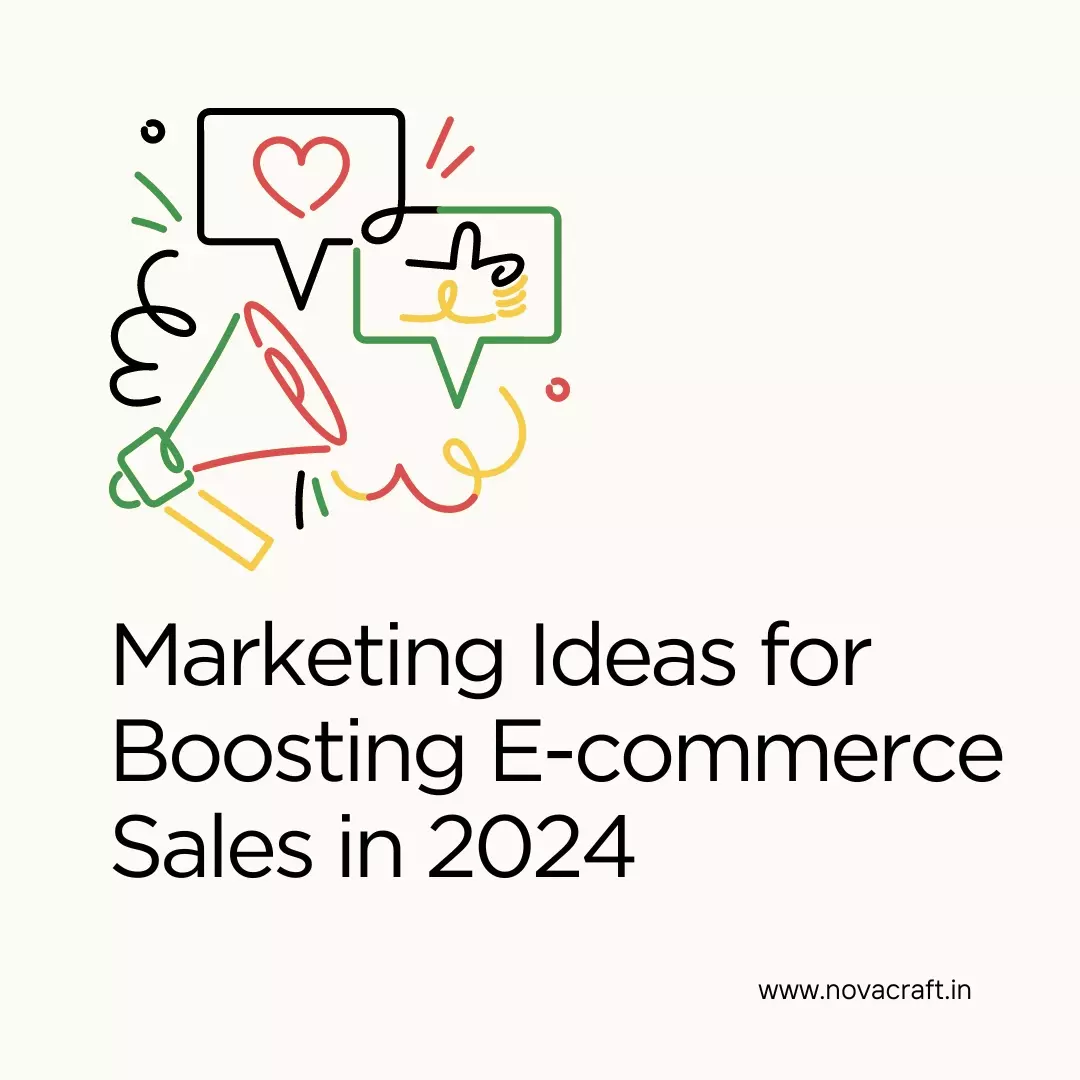Welcome to the future of marketing! In a rapidly evolving digital landscape, staying ahead of the curve is crucial for e-commerce success. And with 2024 just around the corner, it’s time to buckle up and embrace all things futuristic.
In this blog post, we will unveil eight innovative strategies that will catapult your e-commerce sales to new heights.
From AI-powered personalization to immersive virtual experiences, get ready to witness marketing techniques that were once considered science fiction become reality. So fasten your seatbelts and join us on this exhilarating journey as we explore how these cutting-edge approaches can revolutionize your business in ways you never thought possible. The future is now – let’s dive in!
Introduction: Setting the Scene for the Future of E-commerce Marketing
E-commerce has been growing at an exponential rate over the past decade, and as we move into the future, it shows no signs of slowing down. With advancements in technology and changing consumer behaviors, it is important for businesses to stay ahead of the game in order to remain competitive.
In this section, we will set the scene for the future of e-commerce marketing by exploring some key trends and changes that are shaping the industry. We will also discuss why it is crucial for businesses to adapt their marketing strategies in order to thrive in this ever-evolving landscape.
Trends Shaping E-commerce Marketing:
1. Mobile Shopping: With the rise of smartphones and mobile devices, more and more people are turning to their phones for online shopping.
According to Statista, mobile e-commerce sales are expected to reach $3.56 trillion by 2021. This trend highlights the need for businesses to optimize their websites and marketing strategies for mobile users.
2. Personalization: Consumers now expect a personalized experience when shopping online. They want tailored recommendations, customized offers, and a seamless shopping experience across all channels. Businesses that can deliver on these expectations will have a significant advantage over those that do not.
3. Social Media Influence: Social media platforms have become powerful tools for e-commerce marketing. Influencer marketing, user-generated content, and social commerce are just some examples of how businesses can leverage social media to increase their online sales.

Understanding the Current State of E-commerce Sales and Trends
The world of e-commerce is constantly evolving, with new trends and technologies emerging at a rapid pace. In order to stay ahead of the competition and achieve success in the online marketplace, it is crucial for businesses to understand the current state of e-commerce sales and trends.
1.1 Current State of E-commerce Sales
E-commerce has become an essential part of our daily lives, with more and more consumers turning to online shopping for convenience, variety and competitive pricing. The global e-commerce market is expected to reach $4.9 trillion by 2021, indicating the immense potential for growth in this sector.
One of the key driving forces behind this growth is the increasing adoption of mobile devices for online shopping. Mobile commerce, or m-commerce, now accounts for over half of all e-commerce transactions worldwide. This trend is only set to continue as smartphone usage continues to rise globally.
Another significant factor contributing to e-commerce sales is the rise of social media platforms as a powerful marketing tool. With billions of active users on social media channels such as Facebook, Instagram and Pinterest, businesses are able to reach a vast audience and drive traffic directly to their websites.
How to Use AI to Personalize Customer Experience and Increase Conversion Rates
The use of artificial intelligence (AI) in e-commerce marketing has been on the rise in recent years, and for good reason. With the increasing competition in the digital marketplace, businesses are constantly looking for ways to stand out and attract more customers.
AI offers a solution by providing companies with the ability to personalize customer experiences and increase conversion rates.
1.1 Personalizing Customer Experience with AI
One of the biggest advantages of using AI in e-commerce marketing is its ability to personalize customer experiences. With traditional marketing methods, businesses were limited to segmenting their audience into broad categories based on demographics or purchasing behavior.
However, with AI-powered tools like chatbots and recommendation engines, companies can now create highly personalized experiences for individual customers.
Chatbots have become increasingly popular as a means of communication between businesses and consumers. These virtual assistants use natural language processing (NLP) algorithms to understand and respond to customer inquiries in real-time.
By collecting data from previous interactions, chatbots can also make accurate product recommendations tailored specifically to each customer’s preferences.
Similarly, recommendation engines use machine learning algorithms to analyze customer data such as browsing history, purchase behavior, and even social media activity to suggest products that align with their interests.
This level of personalization not only improves the overall shopping experience but also increases the chances of converting a visitor into a paying customer.
1.2 Increasing Conversion Rates with AI
Another major benefit of incorporating AI into e-commerce marketing strategies is its ability to increase conversion rates. By leveraging predictive analytics.
Voice Search Optimization: How to Prepare Your E-commerce Business for a Voice-Controlled Shopping Experience
Voice search technology has been rapidly advancing in recent years, with the rise of smart speakers and virtual assistants like Amazon’s Alexa, Google Assistant, and Apple’s Siri. As more and more consumers turn to voice commands to search for information and make purchases,
it is crucial for e-commerce businesses to adapt their marketing strategies accordingly. In this section, we will discuss how you can prepare your e-commerce business for a voice-controlled shopping experience through voice search optimization.
1. Understand the Basics of Voice Search
Before diving into optimizing your e-commerce business for voice search, it is important to have a basic understanding of how it works. Unlike traditional text-based searches, where users type in specific keywords or phrases on a search engine, voice search is conversational in nature.
It involves speaking directly to a virtual assistant or smart speaker and asking a question or giving a command.
This means that your SEO strategy needs to shift from focusing solely on keywords to also considering natural language queries. People tend to speak differently than they type, so your content should reflect this by including long-tail keywords and phrases that mimic how people actually speak.
2. Optimize Your Website for Local Searches
According to Google, 52% of users who use voice-activated speakers say they use them at least once a day for local searches. This makes local SEO crucial for e-commerce businesses looking to optimize for voice search. The majority of these local searches are done through virtual assistants like Google Assistant or Siri.
The Growing Importance of Augmented Reality in E-commerce: Incorporating AR into Your Marketing Strategy
Augmented reality (AR) is a technology that has been gaining traction in recent years, especially in the world of e-commerce. It allows users to experience products or services in a digital environment that is superimposed on the real world.
This immersive and interactive experience has become increasingly popular among consumers and businesses alike.
Incorporating AR into your marketing strategy can give your e-commerce business a competitive edge by providing an engaging and personalized shopping experience for your customers. Let’s take a closer look at the growing importance of augmented reality and how you can leverage it to boost your e-commerce sales.
1. Enhances Product Visualization
One of the biggest challenges for online retailers is helping customers visualize their products before making a purchase. With traditional product images, it can be difficult for customers to get an accurate sense of size, color, or texture. This often leads to disappointment when the product arrives, resulting in returns and negative reviews.
However, with AR technology, customers can try on clothes virtually or see how furniture would look in their home before making a purchase. By allowing them to interact with products in this way, AR bridges the gap between online and offline shopping experiences, increasing customer satisfaction and reducing returns.
2. Creates Personalized Shopping Experiences
Personalization has become essential for successful marketing strategies in today’s digital landscape. Augmented reality takes personalization one step further by allowing customers to customize products according to their preferences or needs.
Social Commerce: Leveraging Social Media
Social commerce, also known as social media commerce or S-commerce, is the integration of social media and e-commerce. It involves using social media platforms such as Facebook, Instagram, Twitter, and Pinterest to promote and sell products or services directly to consumers.
This emerging trend has gained significant traction in recent years due to the increasing use of social media among consumers.
With over 3 billion active users on various social media platforms worldwide, it’s no surprise that businesses are leveraging this powerful tool to boost their e-commerce sales.
Social commerce allows businesses to reach a larger audience and engage with potential customers in a more personal way. It also takes advantage of the growing trend towards online shopping by integrating it with the highly popular world of social media.
One of the key benefits of social commerce is its ability to create a seamless shopping experience for consumers. By incorporating shopping features into their social media profiles, businesses can allow customers to make purchases without ever leaving their favorite platform.
This not only simplifies the buying process but also eliminates any additional steps that could potentially lead to cart abandonment.
Moreover, with the rise of influencer marketing on social media, businesses can collaborate with influencers who have a large following and strong influence over their audience’s purchasing decisions.
This form of marketing has proven to be highly effective in driving sales as consumers tend to trust recommendations from people they admire or relate to.


